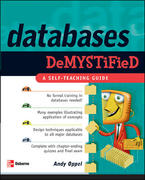Answered step by step
Verified Expert Solution
Question
1 Approved Answer
Please don't copy / paste from ChatGPT or any other LLMs and please give me the code in C for the following problem You are
Please don't copypaste from ChatGPT or any other LLMs and please give me the code in C for the following problem
You are a librarian tasked with merging the book inventories from two branches of the library. Each
branch has its list of books sorted by their unique identification numbers in nondecreasing order. The
central library's inventory system represented by nums has been prepared to accommodate books from
both branches, with extra spaces initially set to zero reserved for the books from the second branch.
Details:
nums represents the list from the central library, which already includes books from the first
branch and has extra space for books from the second branch.
nums represents the list of books from the second branch.
m is the number of books currently listed from the first branch in the central library.
n is the number of books listed from the second branch.
Your task is to merge these two lists in a way that maintains the sorted order, with all the books listed
together in nums
Example :
Input:
numsBooks from the first branch with extra spaces for the second
branch
m books from the first branch
numsBooks from the second branch
n books from the second branch
Output: nums
Explanation: The merged book list maintains the nondecreasing order of book IDs.
Example :
Input:
nums m book from the first branch, no extra space needed
nums n No books from the second branch
Output: nums
Explanation: Since there are no books from the second branch, the list remains unchanged.
Example :
Input:
nums m No books from the first branch, one space for the second branch
nums n book from the second branch
Output: nums
Explanation: Since there are no books from the first branch, the result is simply the list of books
from the second branch.
numslength m n The total length of nums is enough to hold all books from both
branches
numslength n The length of nums is equal to the number of books in the second branch
m n Each branch can have up to books
m n The total number of books from both branches combined will be at most
numsi numsjThe book IDs can be very large numbers, representing
unique identification numbers
You must write an algorithm with Om n runtime complexity. Space complexity should be O
Step by Step Solution
There are 3 Steps involved in it
Step: 1

Get Instant Access to Expert-Tailored Solutions
See step-by-step solutions with expert insights and AI powered tools for academic success
Step: 2

Step: 3

Ace Your Homework with AI
Get the answers you need in no time with our AI-driven, step-by-step assistance
Get Started


